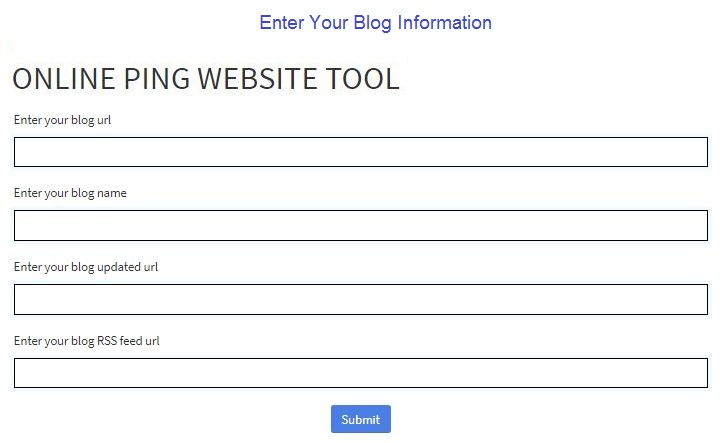Enter your blog url
Enter your blog name
Enter your blog updated url
Enter your blog RSS feed url
Enter your blog url
Enter your blog name
Enter your blog updated url
Enter your blog RSS feed url

We come across plenty of utility tools in the world of the internet. One of the essential utility tools is Ping. It is not to be confused with social networking slang word ping or the high-pitched pinging noise. This term is related to detecting the reachability of a host on an IP address.
In case you didn't know, an IP (Internet Protocol) network is a communication network between two computers that uses IP to send and receive messages. Ping can be generated by using a website ping tool.
The history of Ping dates back 37 years back to 1983. It was drafted by Mike Muuss. It was created to troubleshoot network problems that happened quite often back then. It used sonar technology. Hence it was named after the high-pitched sound that sonar makes.
It was later referred to as an abbreviation for Packet InterNet Groper. It was licensed as a public domain software. Initially, a DOS version was launched. This was followed by developers launching different versions for different platforms.
Back then, the website ping tool did not exist, and it had to be generated manually. In a nutshell, Ping is a network utility tool that detects network availability and latency between two devices. It is available for all operating systems.
Ping evaluates the time consumed to and fro for a message to reach a destination and echo back to its origin. This is done by sending ICMP packets to the host and receiving an ICMP echo reply. All the data related to pinging time, network errors and packet loss is recorded.
The tool operates via active sonar technology. First, a "ping" or data packet is sent to an IP address on a device. Upon receiving the data packet or Ping, the device sends back an echo reply called pong. Great fun, isn't it?
Ping is generated using a ping tool online. Upon receiving the "pong," the device can calculate network latency, among other things. If no pong is received, the device receives an error message.
So when no pong is received, it is established that there are some network errors between two devices. The sole purpose of Pinging is to find and connect with the host using ICMP. To summarise, Pinging works by detecting the connection with a host using active sonar technology.
Pinging an IP address is quite simple, thanks to the free website ping tool. You need to input the following details to complete Pinging.
When the details mentioned above are provided, hit the submit, or generate the ping button. In a moment, a list of Ping servers will appear. The status of each server is marked with appropriate details. There are various free ping generators such as WebmasterFly's free website ping tool.
Screenshot -

